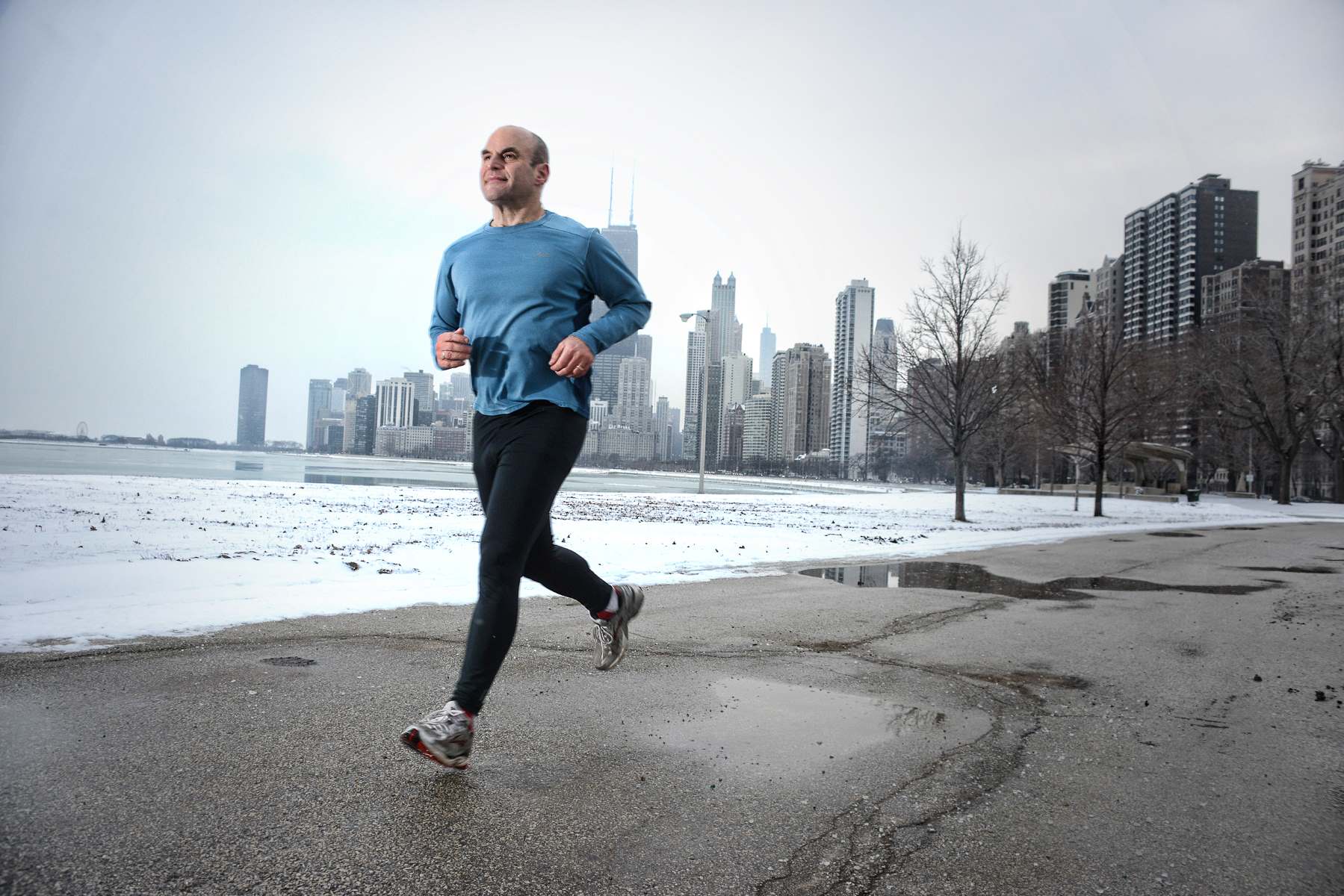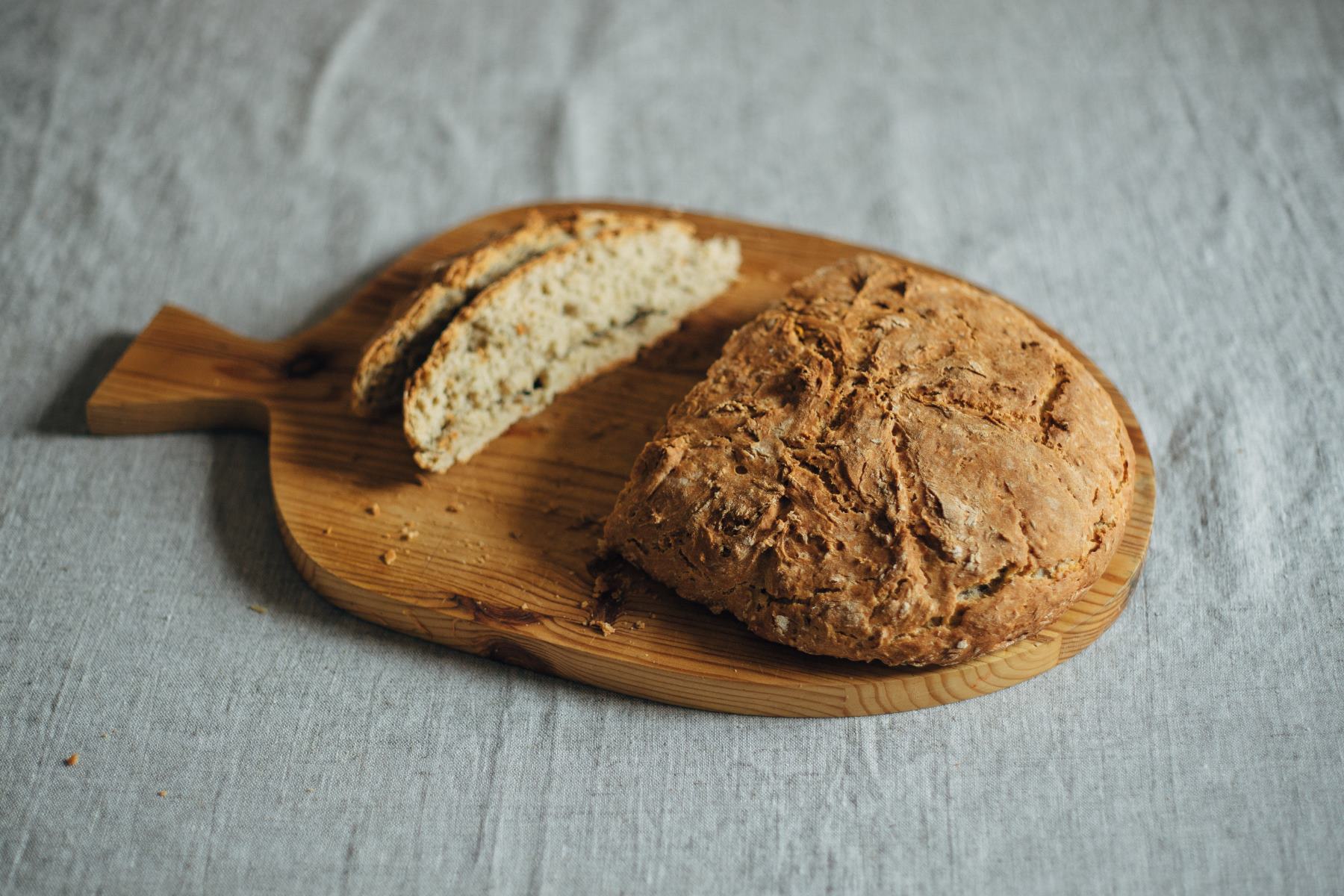Home>Health & Nutrition>Running Guidelines For Individuals Over 40


Health & Nutrition
Running Guidelines For Individuals Over 40
Published: February 21, 2024
Discover essential health and nutrition tips for individuals over 40 with our comprehensive running guidelines. Stay fit and healthy with expert advice.
(Many of the links in this article redirect to a specific reviewed product. Your purchase of these products through affiliate links helps to generate commission for Therunningadvisor.com, at no extra cost. Learn more)
Table of Contents
- Importance of Exercise for Individuals Over 40
- Common Injuries and How to Prevent Them
- Choosing the Right Footwear for Older Runners
- Creating a Training Plan for Older Runners
- Nutrition and Hydration Tips for Older Runners
- Incorporating Strength Training into Your Running Routine
- Listening to Your Body: Signs to Watch Out for
- Tips for Recovery and Rest for Older Runners
Importance of Exercise for Individuals Over 40
Regular exercise is crucial for individuals over 40 to maintain their overall health and well-being. As we age, our bodies undergo various changes, including a decrease in muscle mass, bone density, and flexibility. Engaging in regular physical activity, such as running, can help counteract these age-related changes and promote longevity.
Running, in particular, offers a myriad of benefits for individuals over 40. It is a weight-bearing exercise that can help preserve bone density, reducing the risk of osteoporosis and fractures. Additionally, running strengthens the muscles, tendons, and ligaments, which is essential for maintaining mobility and preventing injuries.
Moreover, running is an excellent cardiovascular exercise, promoting heart health and improving circulation. This is particularly important for individuals over 40, as the risk of heart disease and other cardiovascular conditions tends to increase with age. By engaging in regular running, individuals can lower their blood pressure, improve cholesterol levels, and reduce the risk of developing heart-related issues.
Furthermore, running has been shown to have a positive impact on mental health. As individuals age, they may experience increased stress, anxiety, and cognitive decline. Regular exercise, such as running, can help alleviate these symptoms by releasing endorphins, which are natural mood lifters. Additionally, the sense of accomplishment and improved self-esteem that comes with regular exercise can contribute to a positive outlook on life.
Incorporating running into a fitness routine can also help individuals over 40 maintain a healthy weight. As metabolism tends to slow down with age, staying active through running can aid in managing weight and preventing obesity-related health issues.
Overall, the importance of exercise, particularly running, for individuals over 40 cannot be overstated. It plays a pivotal role in maintaining physical, mental, and emotional well-being, ultimately contributing to a higher quality of life as individuals age.
Common Injuries and How to Prevent Them
Running is a fantastic form of exercise for individuals over 40, but it's essential to be mindful of potential injuries that can arise. As we age, our bodies may be more susceptible to certain types of injuries, such as muscle strains, joint pain, and stress fractures. Understanding these common injuries and implementing preventive measures is crucial for maintaining a safe and sustainable running routine.
Muscle Strains
Muscle strains, often referred to as pulled muscles, can occur when the muscle is overstretched or torn. This can happen during running, especially if the muscles are not adequately warmed up or if there is an abrupt increase in intensity. To prevent muscle strains, it's important to incorporate dynamic stretching and a gradual warm-up routine before each run. Additionally, maintaining proper running form and avoiding sudden movements can help reduce the risk of muscle strains.
Joint Pain
Joint pain, particularly in the knees and hips, is a common concern for older runners. The repetitive impact of running can put stress on the joints, leading to discomfort and inflammation. To mitigate joint pain, it's crucial to invest in supportive footwear that provides adequate cushioning and shock absorption. Furthermore, incorporating strength training exercises to build muscle around the joints can help provide additional support and reduce the impact on the joints during running.
Stress Fractures
Stress fractures are tiny cracks in the bone that can develop from overuse or repetitive impact. Older runners may be more susceptible to stress fractures due to changes in bone density. To prevent stress fractures, it's important to gradually increase running mileage and intensity, allowing the bones to adapt to the stress. Cross-training with low-impact activities, such as swimming or cycling, can also help reduce the risk of stress fractures by providing a break from the repetitive impact of running.
Plantar Fasciitis
Plantar fasciitis is a common foot injury characterized by pain and inflammation in the heel or arch of the foot. This condition can be exacerbated by running, especially if the footwear does not provide adequate arch support. Choosing running shoes with proper arch support and cushioning can help prevent plantar fasciitis. Additionally, incorporating foot-strengthening exercises and stretching routines can help maintain the flexibility and strength of the foot muscles, reducing the risk of this painful condition.
By being mindful of these common injuries and implementing preventive strategies, individuals over 40 can continue to enjoy the numerous benefits of running while minimizing the risk of potential setbacks. Prioritizing proper warm-up routines, supportive footwear, strength training, and gradual progression can contribute to a safe and sustainable running experience, allowing individuals to stay active and healthy for years to come.
Choosing the Right Footwear for Older Runners
Selecting the appropriate footwear is paramount for older runners as it directly impacts comfort, performance, and injury prevention. With age, the body undergoes natural changes, such as decreased cushioning in the feet and changes in gait, making it essential to prioritize supportive and well-fitting running shoes.
When choosing running shoes, older runners should consider several key factors to ensure optimal support and comfort. One crucial aspect is cushioning, as it helps absorb the impact of each stride, reducing stress on the joints and muscles. Look for shoes with ample cushioning in the midsole and heel area, providing a plush and supportive feel during runs.
Additionally, older runners should pay attention to the shoe's stability and support features. As the body's natural stability may diminish with age, it's beneficial to opt for shoes with adequate arch support and a secure heel counter. These elements help maintain proper foot alignment and reduce the risk of overpronation or supination, which can lead to discomfort and potential injuries.
Furthermore, the fit of the running shoes is of utmost importance. Older runners should prioritize a snug yet comfortable fit, ensuring that there is ample room in the toe box to accommodate any potential swelling during longer runs. It's advisable to try on shoes later in the day when the feet are slightly more swollen, mimicking the conditions during a run.
Another consideration is the outsole of the running shoes. Look for durable and grippy outsoles that provide reliable traction, especially on varied terrain. This is particularly important for older runners, as it enhances stability and reduces the risk of slips and falls during outdoor runs.
Moreover, the weight of the shoes can impact the running experience for older individuals. Lighter shoes can reduce the overall strain on the legs and feet, promoting a more effortless and comfortable running motion. However, it's essential to strike a balance, as the shoes should still offer adequate cushioning and support despite being lightweight.
Finally, older runners should be mindful of the lifespan of their running shoes. Over time, the cushioning and support properties of the shoes may diminish, potentially leading to discomfort and increased risk of injuries. It's recommended to replace running shoes after approximately 300-500 miles of use, or if visible signs of wear and tear are present.
By prioritizing cushioning, stability, fit, outsole quality, weight, and shoe lifespan, older runners can make informed decisions when selecting the right footwear for their running endeavors. Investing in high-quality running shoes that cater to the specific needs of older individuals can significantly enhance comfort, performance, and overall running experience, allowing them to pursue their fitness goals with confidence and reduced risk of discomfort or injury.
Creating a Training Plan for Older Runners
Designing a well-structured training plan is essential for older runners to optimize their running performance, minimize the risk of injuries, and ensure long-term sustainability in their fitness journey. When creating a training plan tailored to the needs of older individuals, several key considerations come into play to promote gradual progression, adequate recovery, and overall well-being.
Assessing Current Fitness Level
Before embarking on a training plan, it's crucial for older runners to assess their current fitness level. This involves evaluating factors such as running experience, average weekly mileage, preferred running terrain, and any existing health conditions or physical limitations. By understanding their baseline fitness, older runners can establish realistic goals and tailor their training plan to suit their individual needs and capabilities.
Gradual Progression and Periodization
For older runners, a gradual approach to increasing mileage and intensity is paramount. Implementing a periodized training plan, which involves alternating between periods of higher and lower intensity, can help prevent overtraining and reduce the risk of overuse injuries. By gradually increasing mileage and incorporating recovery weeks into the training schedule, older runners can build endurance and strength while allowing the body to adapt and recover effectively.
Focus on Quality Workouts
Incorporating quality workouts into the training plan can be particularly beneficial for older runners. This may include interval training, tempo runs, and hill workouts, which help improve cardiovascular fitness, running economy, and overall performance. By focusing on quality rather than quantity, older runners can enhance their running capabilities without placing excessive strain on their bodies.
Embracing Cross-Training and Recovery
In addition to running-specific workouts, older runners should integrate cross-training activities, such as swimming, cycling, or yoga, into their training plan. Cross-training helps maintain overall fitness, strengthens complementary muscle groups, and provides a break from the repetitive impact of running. Furthermore, prioritizing adequate rest and recovery is essential for older runners to allow for muscle repair, reduce fatigue, and prevent burnout.
Flexibility and Adaptability
A well-designed training plan for older runners should be flexible and adaptable to accommodate potential changes in schedule, unexpected fatigue, or minor injuries. Being open to adjustments and modifications based on how the body responds to training is crucial for maintaining a sustainable and enjoyable running routine.
By incorporating these elements into a thoughtfully crafted training plan, older runners can optimize their running experience, improve their overall fitness, and pursue their running goals with confidence and longevity. The key lies in striking a balance between progression, recovery, and adaptability, ultimately fostering a fulfilling and sustainable running journey for individuals over 40.
Nutrition and Hydration Tips for Older Runners
Proper nutrition and hydration play a pivotal role in supporting the performance, recovery, and overall well-being of older runners. As individuals age, their nutritional needs may evolve, making it essential to prioritize a balanced and nutrient-rich diet to fuel their running endeavors.
Balanced Diet for Optimal Performance
Older runners should focus on consuming a well-rounded diet that includes a variety of nutrient-dense foods. Incorporating a balance of carbohydrates, proteins, healthy fats, vitamins, and minerals is crucial for sustaining energy levels, supporting muscle function, and promoting overall health. Carbohydrates serve as the primary fuel source for running, while proteins aid in muscle repair and recovery. Healthy fats, such as those found in avocados and nuts, contribute to sustained energy and support joint health.
Adequate Hydration for Endurance
Proper hydration is essential for older runners to maintain endurance and prevent dehydration-related complications. As individuals age, the sensation of thirst may diminish, making it important to proactively consume fluids before, during, and after runs. Water is fundamental for regulating body temperature and supporting cellular function. Additionally, incorporating electrolyte-rich beverages or supplements can help replenish essential minerals lost through sweat, particularly during longer or more intense runs.
Pre-Run Fueling Strategies
Before a run, older runners should prioritize consuming a balanced meal or snack that provides a mix of carbohydrates and a moderate amount of protein. This can help top up glycogen stores and provide sustained energy for the run. Optimal pre-run fueling options may include oatmeal with fruits, a banana with nut butter, or a yogurt parfait. It's important to allow sufficient time for digestion, typically 1-2 hours, to prevent discomfort during the run.
Post-Run Recovery Nutrition
After a run, older runners should focus on replenishing glycogen stores and supporting muscle recovery. Consuming a post-run meal or snack that combines carbohydrates and proteins can aid in muscle repair and glycogen replenishment. Nutrient-rich options may include a smoothie with protein powder, a turkey and vegetable wrap, or a balanced meal consisting of lean protein, whole grains, and vegetables.
Nutrient-Dense Snacking
Incorporating nutrient-dense snacks into the daily diet can help older runners maintain energy levels and support overall nutrition. Snack options such as Greek yogurt with berries, trail mix, whole grain crackers with hummus, or a piece of fruit with a handful of nuts can provide sustained energy and essential nutrients between meals.
Individualized Nutrition Planning
It's important for older runners to consider their individual nutritional needs, taking into account factors such as any existing health conditions, dietary preferences, and potential nutrient deficiencies. Consulting with a registered dietitian or nutritionist can provide personalized guidance and support in developing a nutrition plan tailored to the specific needs of older individuals.
By prioritizing a balanced diet, adequate hydration, strategic pre-run and post-run nutrition, nutrient-dense snacking, and personalized nutritional planning, older runners can optimize their running performance, support overall health, and enhance their running experience for years to come. These nutrition and hydration tips serve as essential components in promoting sustained energy, efficient recovery, and long-term well-being for individuals over 40 who are passionate about running.
Incorporating Strength Training into Your Running Routine
Incorporating strength training into a running routine is a valuable strategy for individuals over 40 to enhance their running performance, reduce the risk of injuries, and promote overall physical resilience. As we age, maintaining muscle strength and joint stability becomes increasingly important, and strength training serves as a complementary component to running, offering a multitude of benefits.
One of the primary advantages of strength training for older runners is its ability to improve muscular endurance and power. Engaging in exercises that target major muscle groups, such as the quadriceps, hamstrings, glutes, and core, can help enhance running efficiency and form. This, in turn, contributes to better running economy and reduced fatigue, allowing older runners to sustain their performance over longer distances.
Furthermore, strength training plays a crucial role in injury prevention. By strengthening the muscles and connective tissues, individuals can better withstand the repetitive impact of running and reduce the risk of overuse injuries. Additionally, a strong musculoskeletal system provides better joint support, potentially alleviating common issues such as knee pain and hip discomfort that older runners may encounter.
Incorporating a variety of strength training exercises, including bodyweight exercises, resistance training, and functional movements, can help older runners improve their overall stability and balance. This is particularly beneficial for maintaining proper running form and reducing the risk of falls or missteps during runs, ultimately enhancing safety and confidence.
Moreover, strength training contributes to improved bone density, which is crucial for older individuals in mitigating the risk of osteoporosis and fractures. Weight-bearing exercises, such as squats, lunges, and resistance training, stimulate bone growth and help preserve bone mass, promoting skeletal health and reducing the likelihood of bone-related injuries.
When integrating strength training into a running routine, it's essential to prioritize exercises that target both the lower body and the core, as these areas play a significant role in running mechanics and overall stability. Additionally, incorporating flexibility and mobility exercises can help maintain joint range of motion and prevent stiffness, contributing to improved running performance and reduced injury risk.
By embracing a well-rounded approach that combines running with targeted strength training, older runners can optimize their physical capabilities, reduce the likelihood of injuries, and enhance their overall running experience. The synergy between running and strength training fosters a balanced and resilient body, empowering individuals over 40 to pursue their running goals with confidence and longevity.
Read more: Running For Fast Abs
Listening to Your Body: Signs to Watch Out for
Listening to your body is a fundamental aspect of running, especially for individuals over 40. As we age, our bodies undergo various changes, and paying close attention to the signals it sends is crucial for maintaining a safe and sustainable running routine. By being attuned to the following signs, older runners can proactively address potential issues and prioritize their overall well-being.
Fatigue and Persistent Soreness
Feeling excessively fatigued or experiencing persistent muscle soreness beyond the typical post-run discomfort may indicate that the body needs additional rest and recovery. While it's normal to experience muscle fatigue after a challenging run, prolonged and unexplained fatigue could be a sign of overtraining or inadequate recovery. It's important to listen to these signals and adjust the training plan accordingly to prevent burnout and potential injuries.
Joint Discomfort and Stiffness
As individuals age, joint discomfort and stiffness may become more prevalent, particularly after running. Persistent or worsening joint pain, especially in weight-bearing joints such as the knees and hips, should not be ignored. It may indicate underlying issues that require attention, such as improper running form, worn-out footwear, or the need for additional cross-training and flexibility exercises to support joint health.
Changes in Running Gait or Form
Noticing significant changes in running gait or form, such as limping, favoring one side, or experiencing asymmetrical movements, can be indicative of underlying muscle imbalances or potential injuries. It's essential to address these changes promptly by seeking guidance from a professional, such as a physical therapist or running coach, to identify and rectify any issues that may compromise running mechanics and overall physical well-being.
Read more: Running With Super Sunglasses
Unexplained Decrease in Performance
Experiencing an unexplained decrease in running performance, such as struggling to maintain previous paces or distances, could signal underlying fatigue, overtraining, or potential health concerns. It's crucial to acknowledge these changes and consider adjusting the training plan, incorporating additional rest, or seeking medical advice if the decline in performance persists.
Persistent Discomfort or Niggles
Persistent discomfort or niggles, such as recurring pain in specific areas, should not be dismissed. These signals may indicate overuse injuries, muscle imbalances, or the need for targeted strength training and mobility work. Ignoring persistent discomfort can exacerbate underlying issues, hindering long-term running enjoyment and potentially leading to more severe injuries.
Emotional and Mental Well-being
In addition to physical signals, paying attention to emotional and mental well-being is equally important. Feeling consistently demotivated, excessively stressed, or experiencing a decline in overall mental health can impact running performance and enjoyment. It's essential to prioritize mental well-being and seek support if needed, as a positive mindset is integral to sustaining a fulfilling running routine.
By actively listening to these signals and responding accordingly, older runners can prioritize their physical and mental well-being, mitigate the risk of potential injuries, and maintain a sustainable and enjoyable running experience for years to come. Being attuned to the body's cues fosters a proactive and holistic approach to running, ultimately contributing to long-term health and fitness.
Tips for Recovery and Rest for Older Runners
Recovery and rest are integral components of a well-rounded running routine, particularly for older runners. As individuals age, the body's ability to repair and adapt to the demands of running may require additional attention and care. Implementing effective recovery strategies and prioritizing adequate rest can significantly contribute to injury prevention, performance optimization, and overall well-being for older individuals engaged in running.
One essential aspect of recovery for older runners is allowing ample time for rest between runs. Unlike younger counterparts, older runners may require longer recovery periods to allow for muscle repair and adaptation. Incorporating rest days into the training schedule, especially after more intense workouts or long runs, provides the body with the necessary time to recuperate, reducing the risk of overuse injuries and fatigue.
Furthermore, older runners can benefit from incorporating active recovery techniques into their routine. Low-impact activities such as walking, swimming, or gentle yoga can promote blood circulation, alleviate muscle tension, and support overall recovery without placing excessive strain on the body. Engaging in these activities on rest days can help maintain mobility and flexibility while facilitating the recovery process.
In addition to physical recovery, prioritizing adequate sleep is crucial for older runners. Quality sleep plays a vital role in muscle repair, hormone regulation, and cognitive function, all of which are essential for overall health and running performance. Older individuals should aim for 7-9 hours of uninterrupted sleep each night, creating a conducive sleep environment and establishing consistent bedtime routines to support restorative rest.
Nutrition also plays a pivotal role in recovery for older runners. Consuming a balanced post-run meal or snack that combines carbohydrates and proteins can aid in muscle glycogen replenishment and repair. Additionally, incorporating anti-inflammatory foods such as fruits, vegetables, and omega-3 rich sources can help reduce exercise-induced inflammation and support overall recovery.
Moreover, older runners can benefit from incorporating recovery-focused activities such as foam rolling, stretching, and massage therapy into their routine. These techniques help alleviate muscle tightness, improve range of motion, and promote circulation, contributing to enhanced recovery and reduced muscle soreness.
By embracing these recovery and rest strategies, older runners can optimize their running experience, reduce the risk of injuries, and support overall well-being. Prioritizing adequate rest, active recovery, quality sleep, nutrition, and targeted recovery activities fosters a holistic approach to running, ultimately contributing to sustained enjoyment and longevity in the sport.










